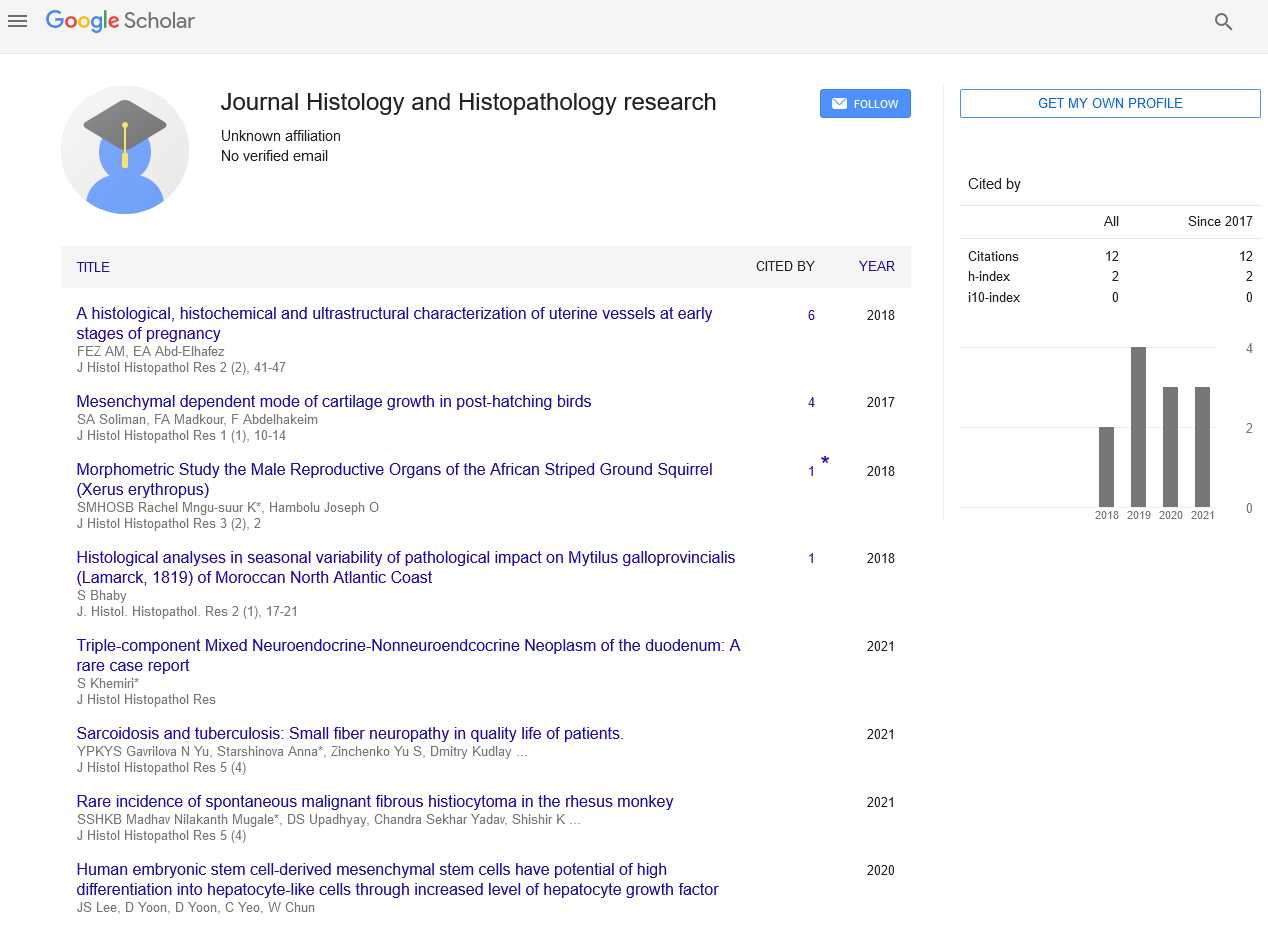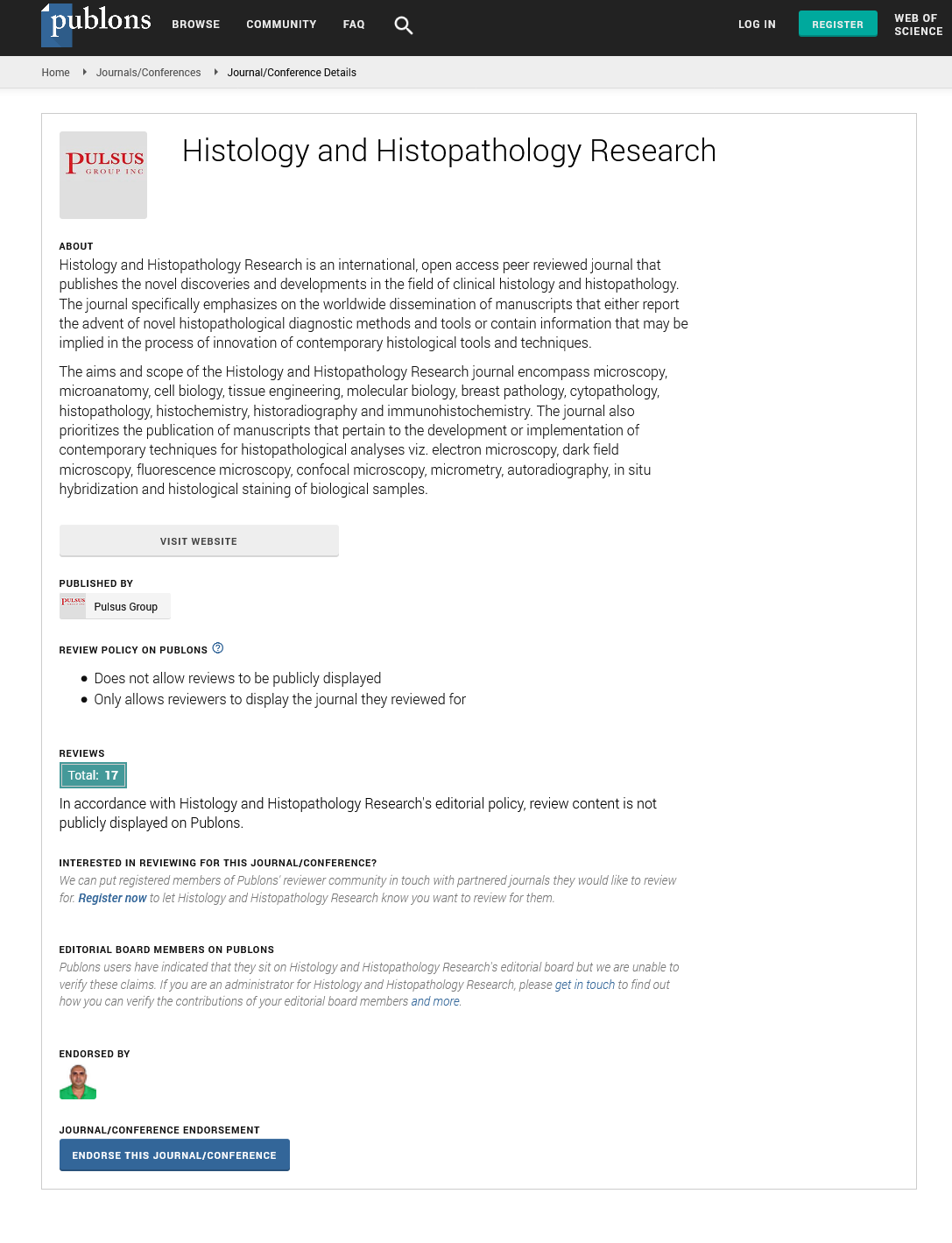Techniques of immunohistochemistry
Received: 07-Jul-2021 Accepted Date: Jul 21, 2021; Published: 28-Jul-2021
This open-access article is distributed under the terms of the Creative Commons Attribution Non-Commercial License (CC BY-NC) (http://creativecommons.org/licenses/by-nc/4.0/), which permits reuse, distribution and reproduction of the article, provided that the original work is properly cited and the reuse is restricted to noncommercial purposes. For commercial reuse, contact reprints@pulsus.com
Description
Immunohistochemistry (IHC) is the well-known usage of immune staining. It includes the cycle of specifically distinguishing antigens (proteins) in cells of a tissue segment by abusing the standard of antibodies restricting explicitly to antigens in natural tissues. IHC takes its name from the roots "immuno", concerning antibodies utilized in the method, and "histo", which means tissue (show up contrastingly comparable to immunocytochemistry). Albert Coons conceptualized and first executed the system in 1941. Envisioning a counter acting agent antigen communication can be refined in various manners, predominantly both of the accompanying: Chromogenic immunohistochemistry (CIH), wherein a neutralizer is formed to a chemical, like peroxidase (the blend being named immune peroxidase), that can catalyze a shading delivering response Immunofluorescence, where the immunizer is labeled to a fluorophore, like fluorescein or rhodamine.
Planning tissue cuts
The tissue may then be cut or utilized entire, subject to the motivation behind the investigation or the actual tissue. Prior to segment, the tissue test might be installed in a medium, similar to paraffin wax or cryomedia. Segments can be cut on an assortment of instruments, most normally a microtome, cryostat, or vibratome. Examples are ordinarily cut at a scope of 3 μm - 5 μm. The cuts are then mounted on slides, dried out utilizing liquor washes of expanding fixations, and cleared utilizing a cleanser like xylene prior to being imaged under a magnifying lens. Contingent upon the strategy for obsession and tissue conservation, the example may require extra strides to make the epitopes accessible for counter acting agent restricting, including deparaffinization and antigen recovery. For formalin- fixed paraffin-inserted tissues, antigen-recovery is frequently important, and includes pre-treating the areas with warmth or protease. These means may have the effect between the objective antigens staining or not staining.
Reducing non-specific immuno-staining
Contingent upon the tissue type and the strategy for antigen recognition, endogenous biotin or catalysts may should be obstructed or extinguished, separately, preceding neutralizer staining. Despite the fact that antibodies show particular ardentness for explicit epitopes, they may mostly or feebly tie to destinations on vague proteins (additionally called responsive locales) that are like the related restricting locales on the objective antigen. A lot of vague restricting causes high foundation staining which will veil the recognition of the objective antigen. To diminish establishment staining in IHC, ICC and other immune staining procedures, tests are brought forth with a help that blocks the responsive objections to which the fundamental or discretionary antibodies may some way or another tight spot. Normal hindering cushions incorporate typical serum, non-fat dry milk, BSA, or gelatin. Business impeding supports with restrictive definitions are accessible for more noteworthy proficiency. Strategies to wipe out foundation staining incorporate weakening of the essential or optional antibodies, changing the time or temperature of brooding, and utilizing an alternate recognition framework or diverse essential immunizer. Quality control ought to as a base incorporate a tissue referred to communicate the antigen as a positive control and negative controls of tissue known not to communicate the antigen, just as the test tissue examined similarly with exclusion of the essential immunizer (or better, retention of the essential neutralizer).
Target antigen location techniques
The immediate technique is a one-venture staining strategy and includes a named neutralizer responding straightforwardly with the antigen in tissue areas. While this strategy uses just a single immune response and consequently is basic and quick, the affectability is lower because of minimal sign intensification, rather than aberrant methodologies. Be that as it may, this methodology is utilized less as often as possible than its multi-stage partner. The aberrant strategy includes an unlabeled essential immunizer (first layer) that ties to the objective antigen in the tissue and a marked auxiliary neutralizer (second layer) that responds with the essential counter acting agent. As referenced over, the auxiliary neutralizer should be raised against the IgG of the creature species wherein the essential counter acting agent has been raised. This strategy is touchier than direct location methodologies as a result of sign intensification because of the limiting of a few optional antibodies to every essential immunizer if the auxiliary counter acting agent is formed to the fluorescent or chemical columnist.






